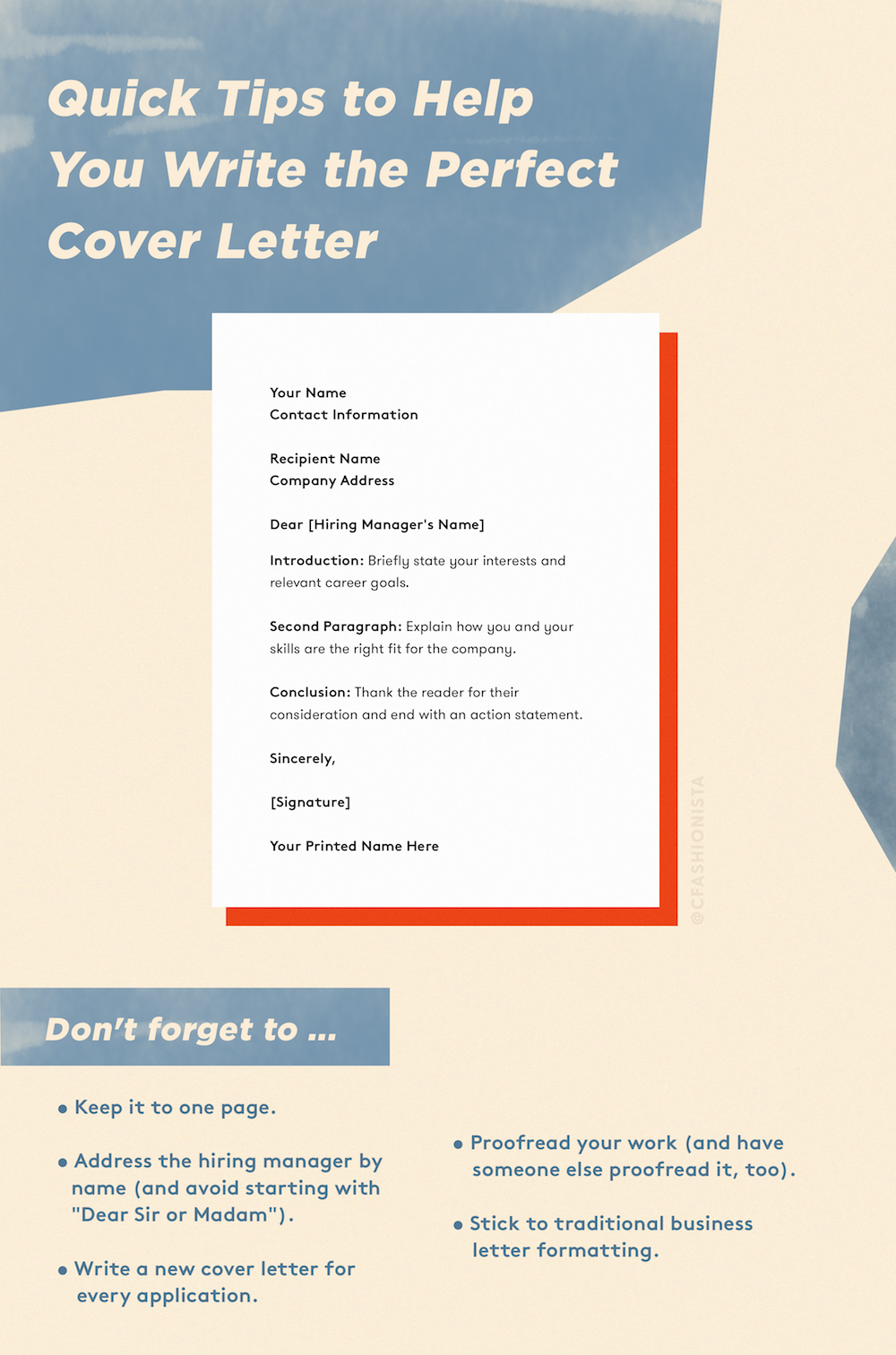I’m just going to be real here: I’m still not 100% sure I know how to write a cover letter. Yes, I am a 24-year-old, and yes, I interned for three years and am two years into an editing job. It’s embarrassing to admit, but I take solace in knowing I’m not alone. In fact, I don’t think I know a single human (at least one near my age, anyway) who feels confident in their cover letter-writing skills.
Unfortunately, though, it’s a skill that many must master when applying for jobs. Which leaves me wondering how, exactly, that skill is acquired. I certainly didn’t learn in college (uh, why was I there, again?), and a quick Google search of “how to write a cover letter” turns up roughly 23,900,000 results—many of which are very strange and almost definitely not accurate (not to mention it would take a lifetime to read through all of them).
So I decided to take one for the team (you’re welcome) and dive in anyway, and spent way too much time searching the internet for the best tips I could find. And a couple of hours in, it dawned on me there are a few standard, tried-and-true tips for writing cover letters that have been right under my nose the whole time—and, surprisingly, they’re really easy to follow. If you’re still unsure about how to craft the perfect cover letter, keep reading for a foolproof plan, and save the template as an easy guide to follow the next time you’re in a writing rut.
Write a New Letter for Every Application
Forget sending the same cover letter to every company; that won’t work. Your letter should mirror the voice of the company (so do your research!) and needs to include why you’re excited to work for that specific brand. Glassdoor writes, “No templates. No pre-written nonsense. The format of your cover letter should also match the company and the industry you’re applying to.” As career coach Rose Keating explained to MyDomaine, “Anyone who’s been a recruiter can pick those out extremely easily and disqualify the candidate—because if you can’t take the time to write a unique, role-specific cover letter, how interested can you be in the position?” If you want to stand out, go for quality, not quantity.
Don't Go Over One Page
You may have heard that you should never go over one page on your résumé. The same is true for cover letters. “There are always exceptions to the rule, but in general, for résumés and cover letters alike, don’t go over a page,” writes The Muse. Still not sure what that means? Vogue explains that you should, “stick to two or three paragraphs and jump right into compelling information—don’t waste space with a bland or lengthy introduction.” In other words, get right to the point in as few words as possible, because busy hiring managers don’t have time to wade through lengthy stories and overly wordy descriptions.
Address the Hiring Manager by Name
Before you start typing out, “Dear Sir or Madam,” stop yourself—this is something no hiring manager or employer wants to see at the top of your letter. Instead, take the time to research the employees at the company to find out who will be reading it. This will make the letter more personalized and show potential employers that you took the time to research the company and job. And if you just can’t find the right person, don’t sweat it. The Muse writes that you should use the name of the person who is the head of the department you’re hoping to work in. If you still can’t find the information, “Consider using “Senior Analyst Hiring Manager’ or ‘Research Manager Search Committee’—something that shows that you’ve written this letter with a particular audience in mind.”
Introduce Yourself in the First Paragraph
First things first: Don’t state your name again. It should be at the top and bottom of the page, and the hiring manager has probably already seen it on your résumé, too. Then, jump into your interests and relevant career goals. However, keep it brief, and don’t start listing out everything you’ve ever done. Cosmopolitan writes, “Introductions are vital, especially when you’re writing to someone you’ve never met, but make sure you don’t end up hashing out all of your achievements.” Leave that information to include in the rest of your cover letter.
Explain Why You're a Great Fit in the Second Paragraph
According to MyDomaine, this should be the longest portion of your letter and should be where you explain in-depth (but concisely) why you’re a great fit for the role. “Talk about your experience and qualifications, specifically how those qualifications relate to the job you’re applying for,” writes MyDomaine. However, don’t just list your past roles out—that’s what your résumé is for. As Vogue Australia assistant digital editor Francesca Wallace explained to Vogue Australia, “Don’t list all your previous jobs but rather explain why you are right for the job — this is your opportunity for your personality and skills to really shine through.” And of course, don’t forget to include why you would be good for that company specifically. As Vogue explains, “Make specific references to the company’s evolution and how you plan to contribute to it. Talk about elements of your portfolio you could apply directly to their brand.” You shouldn’t just explain your skills—you need to show that you understand how they’ll apply to the brand as well.
End The Last Paragraph With a Thank You
MyDomaine writes, “This is where you’ll thank the employer for their consideration.” Be sure to keep it brief, and end with an action statement. Business Insider explains, “Always close your cover letter with an action statement. Tell the reader what you’re planning on doing next—for example, calling in a week or two to follow up.” This will show the hiring manager that you appreciate their time and encourage them to get in touch with you.
Perfect the Details
It goes without saying that you should proofread your letter. In fact, Nanette Lepore explained to Fashionista that she “can’t stand misspelled words in cover letters, and you see that a lot. I wouldn’t even think of bringing somebody in if they misspelled words in their cover letters.” Have a friend check it for spelling and grammar, and read it out loud to yourself to ensure it makes sense.
When it comes to design and formatting, don’t be afraid to go the traditional route. Vogue states that “your address, as well as the hiring manager’s, should be at the top, and you should sign the letter above your typed name at the bottom.” Because your letter should be easy to read, stick to a simple font and single-spaced lines. When you’ve perfected everything, save it as a PDF with your first name, last name, and the words “Cover Letter” so that the hiring manager can easily find it if they need to go back to it.

Now that you know how to write a cover letter, you’re probably in need of a killer résumé to match. Here’s everything you need to know to make it happen.
Featured photo by @thatchiclex

